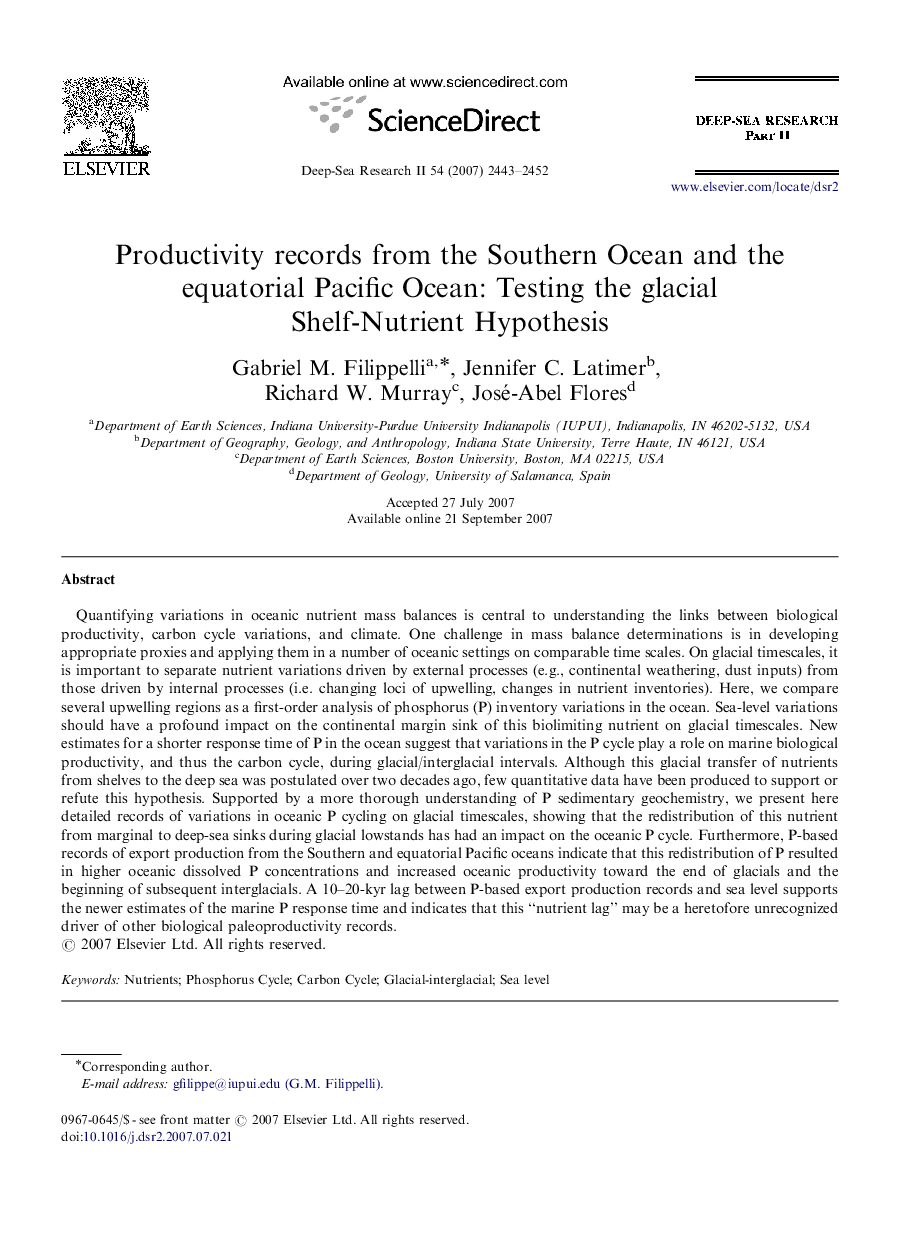| Article ID | Journal | Published Year | Pages | File Type |
|---|---|---|---|---|
| 4538281 | Deep Sea Research Part II: Topical Studies in Oceanography | 2007 | 10 Pages |
Quantifying variations in oceanic nutrient mass balances is central to understanding the links between biological productivity, carbon cycle variations, and climate. One challenge in mass balance determinations is in developing appropriate proxies and applying them in a number of oceanic settings on comparable time scales. On glacial timescales, it is important to separate nutrient variations driven by external processes (e.g., continental weathering, dust inputs) from those driven by internal processes (i.e. changing loci of upwelling, changes in nutrient inventories). Here, we compare several upwelling regions as a first-order analysis of phosphorus (P) inventory variations in the ocean. Sea-level variations should have a profound impact on the continental margin sink of this biolimiting nutrient on glacial timescales. New estimates for a shorter response time of P in the ocean suggest that variations in the P cycle play a role on marine biological productivity, and thus the carbon cycle, during glacial/interglacial intervals. Although this glacial transfer of nutrients from shelves to the deep sea was postulated over two decades ago, few quantitative data have been produced to support or refute this hypothesis. Supported by a more thorough understanding of P sedimentary geochemistry, we present here detailed records of variations in oceanic P cycling on glacial timescales, showing that the redistribution of this nutrient from marginal to deep-sea sinks during glacial lowstands has had an impact on the oceanic P cycle. Furthermore, P-based records of export production from the Southern and equatorial Pacific oceans indicate that this redistribution of P resulted in higher oceanic dissolved P concentrations and increased oceanic productivity toward the end of glacials and the beginning of subsequent interglacials. A 10–20-kyr lag between P-based export production records and sea level supports the newer estimates of the marine P response time and indicates that this “nutrient lag” may be a heretofore unrecognized driver of other biological paleoproductivity records.
